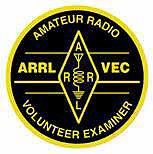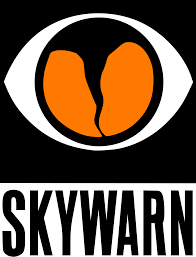Fundamentals
- Tactical call signs are words or phrases that identify a station regardless of who the operator of the station is. Ideally, the tactical call sign provides a short and concise identification of the location.
- Why use tactical call signs? We use tactical call signs specifically because we need to identify the location traffic is coming from or going to. Operators may move from site to site or be replaced by another operator, so ham call signs are poor tools for identifying tactical locations.
- It is important that all EMCOMM communications be clear and distinct regarding who is calling whom. Frequently we hear situations where considerable time is wasted in relaying messages taken up by over use of long and unnecessary FCC call signs that hams are accustomed to in our daily communications and yet there can be confusion as to who is communicating to whom.
- EMCOMM communications typically uses an adaptation of Military and Aviation communications protocol to provide for more streamlined ”to” and “from” definition and still comply with FCC Part 97. This is called using tactical call signs. Tactical call signs can identify the station’s location or its purpose during an event, regardless of who is operating the station. This is an important concept. The tactical call sign also allows you to contact a station without knowing the FCC call sign of the operator. It virtually eliminates confusion at shift changes or at stations with multiple operators.
- Tactical call signs should be used for all emergency nets and public service events if there are more than just a few participants.
- If one does not already exist, the NCS may assign the tactical call sign as each location is “opened.” Tactical call signs will usually provide some information about the location or its purpose of each station.
- It is often helpful if the tactical call signs have a meaning that matches the way in which the served agency identifies the location or function.
- Some examples of tactical call signs are:
- “Net”--for net control station usually at Incident who orchestrates smooth transmissions and sets communications priority.
- “Alternate Net” – for alternate NCS perhaps at a home location for backup.“
- “CHECKPOINT 1” - Identifies physical location or function.
Meeting FCC Part 97 rules regarding Amateur Radio Service:
- The FCC requires identification only at end of transmission sequences and every ten minutes during a single transmission.
- A directed net can be thought of as a series of transmissions comprising a single sequence and thus there is no need for FCC ID during the working part of the net unless a single transmission is longer than 10 minutes which is not recommended.
- Always listen before transmitting and be as brief as possible on the initial call until you have clearance from NCS.
Tactical Calls and procedures to avoid
- “Control” or phrases with control in them. Unless you are assigned to shadow the Incident Commander in an ICS situation and can speak for him/her or directly to him/her, do not use the pro word or call sign “Control”. Get used to calling the ham NCS as “Net” and not Net Control to avoid any confusion with the Incident Commander who has ultimate control of the exercise or activation we are supporting. Our NCS has no role being a pseudo IC.
- “Turkey Trot 77, Sky King 23, or even EMCOMM Unit 1” - This flavor of military tactical call does nothing to convey a sense of what your functional support role is. Avoid this type of call sign unless directly authorized by higher authority for information security reasons.
- Never use your Ham Call on other frequencies such as FRS, EMA, or Public Service bands.
- Except on informal time or training drills at the discretion of NCS, avoid using operator names during nets. It makes us look un-professional to those listening on scanners.
- When using a tactical call together with your required FCC Ident, use your own operator’s call not a call issued to the station you are working from. This is a carry over from the days when station and operator calls were issued separately. Unless you have the direct permission of the trustee/control operator, you should identify yourself for FCC purposes together with the linkage to the tactical call being used. Avoid trouble by using some third party call. You are the one responsible for insuring that the station is operating within the limits of your license.
Rules of thumb:
- USE COMMON SENSE AND USE THE MOST ABREVIATED ID TO ESTABLISH WHO YOU ARE AND WHO YOU NEED TO TALK TO WHEN CHECKING IN OR DURING A CONVERSTION ON THE NET.
- USE YOUR FULL FCC ID WHEN ASKED TO BY NCS OR DURING YOUR FINAL TRANSMISSION DURING A SERIES OF TRANSMISSIONS ON THE NET.
- AVOID LONG TRANSMISSIONS WITH REPEATER KEYED. IF ABSOLUTELY NECESSARY, ID EVERY 10 MINUTES IF YOU CAN NOT AVOID IT.




